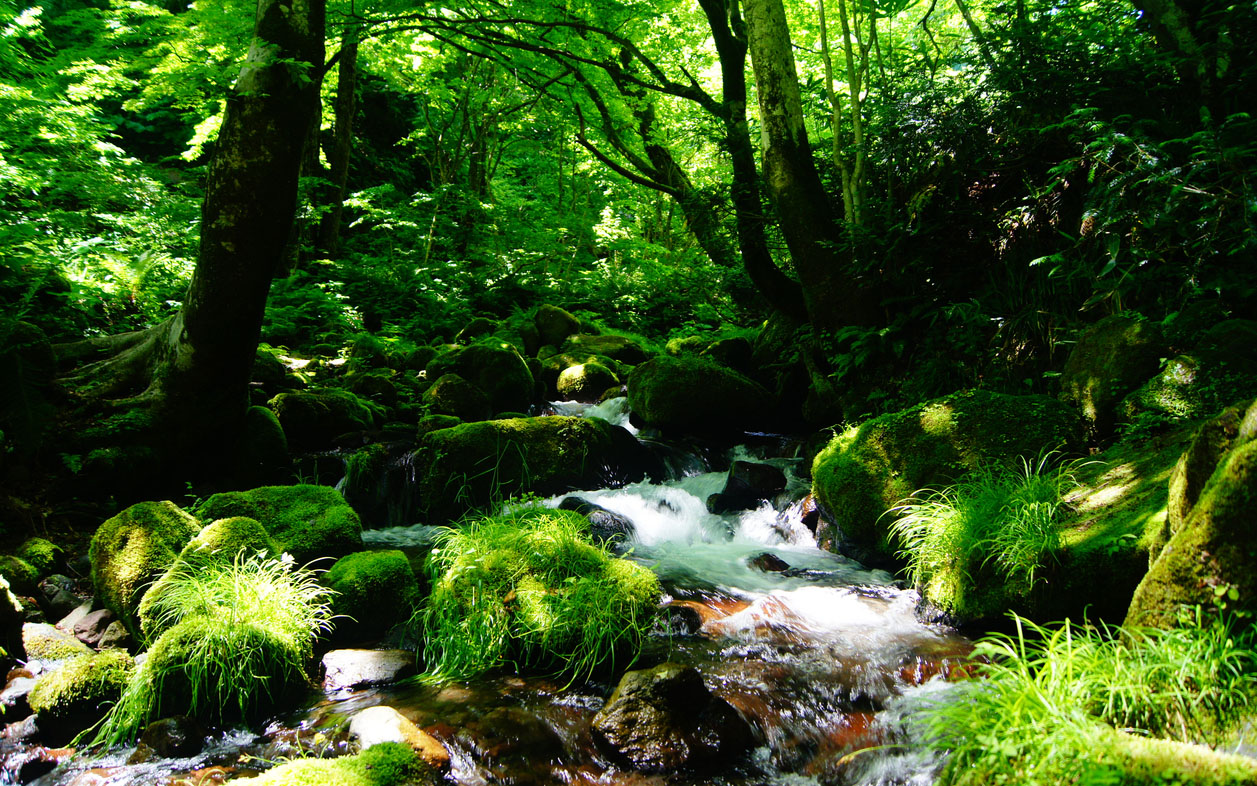While tourists from all over travel to Japan to see cherry blossoms in March, a season comes right after it that not many know by name. The season before summer fully sets in and after the last cherry blossom petal has fallen is called shinryoku. Written using the characters 新 (new) and 緑 (green), the Japanese word shinryoku refers to young leaves that trees sprout in the spring.
I learned this word in 2022 when my friend Nobuhiro Ito, a retired national park ranger, invited me to participate in a guided shinryoku viewing walk on Mount Daisen in Tottori Prefecture. I was eager to take part because due to COVID-19 prevention measures that restricted gatherings and limited my work to online activities, I hadn’t spent much time outside or with friends since I had moved to Japan months before.
As it happened, the symbolism of shinryoku and the simple act of spending time in nature with others was the perfect moment.
Shinryoku defined

When I asked Ito-san about the cultural significance of shinryoku, he explained that newly grown greenery is “a testament of growth and vitality” and a symbol of the start of a new life cycle. The exact meaning of this significance is perhaps best understood in the context of two events that often overlap with shinryoku: Children’s Day and the start of rice planting.
On May 5, families throughout Japan celebrate Children’s Day, a holiday dedicated to wishing for children’s well-being and prosperity. If shinryoku season begins around the same time as this holiday, the act of trees sprouting after a long winter adds hope for the future.
Meanwhile, the convergence of shinryoku and rice planting carries its own meaning. For centuries, rice has been a staple crop of Japan, steeped in traditional spirituality. Texts such as The Kojiki and Nihon Shoki (Nihongi) attribute the origin of rice cultivation to Shinto deities. As a result, throughout Japan spring festivals are held to pray for the growth of newly planted crops. Like with Children’s Day, the convergence of shinryoku season with this time embodies wishes for growth.
Shinryoku season can start as early as April, and as late as June, so these events do not always overlap. However, the act of new leaves growing after the winter months symbolizes new beginnings, new growth and hope for a promising future.
Click here to read more.
- External Link
- https://gaijinpot.com/
 Take our user survey and make your voice heard.
Take our user survey and make your voice heard.















7 Comments
Login to comment
JeffLee
The Japanese don't pay attention to this time of year, which is arguably the best in terms of weather and for appreciation of nature.
Japan has plenty of national holidays during the year -- except for now. Nothing between GW and July 17, the start of summer. Everyone must be at work or at school, and the national mood is serious, somber if not depressed. Note the expression "Gogatsu Byo."
It's odd to me, as this is my favorite time in Japan when I'm most active and outdoors. It's a great time to travel -places are so quiet and empty. Naturally, I'm not Japanese! At times like this, I feel I'm the opposite of being Japanese.
Moonraker
It would be nice to have some greenery where I live. There is just the odd tree. I feel like greenery is even unwelcome. Kids can easily grow up with just the few trees and bushes in a dirt/gravel playground. And watch their mothers recoil when a pigeon flies too close. What is it teaching them, in contrast to this cheery piece?
wallace
The new green is visually stimulating.
kohakuebisu
Yes, its is fine time of year. Lots of lush greenery. Any place with fine autumn colour will look good in spring as the same trees take on new leaves. All the planted conifers meanwhile will look the same year round.
GBR48
The seasons are not restricted to the countryside. It is fascinating to see new leaves on trees, up close. Plant them in tubs - bigger than bonsai, but tending and root pruning them like bonsai - and you can watch your trees growing and changing through the year. Japanese maples don't just look great in the Autumn. Many of them change colour through the year, and they grow very happily in pots. If you grow them in pots, you and passers-by will be looking down on their changing leaf colours, which is the best way of appreciating them. They are particularly beautiful when the leaves first unfurl and are available with wide range of leaf colours, patterns, and shapes. I have about a dozen and add more each year.
To foster an appreciation for nature, every school needs a Garden Club, with somewhere to grow stuff. Local communities could also network together, helping those who want to grow plants in whatever space they have. Guerrilla gardening is also popular in cities. The best way to start fixing a problem is by everyone doing what they can - these bits will join up. You have a garden? Fill it with flowers and fruit. You have a tiny space outside your house or a balcony, plant stuff on it, safely and securely. Urban gardening is greening cities around the world. Japan has urban allotments. Get on a list for one and get your fingernails dirty. Bring the green into the cities.
wallace
I have just pruned my pine trees with the new green. Now they are all wabi-sabi perfection of the imperfect.
Many Japanese schools have garden clubs and some grow vegetables.
Kaowaiinekochanknaw
Love this time of the year.